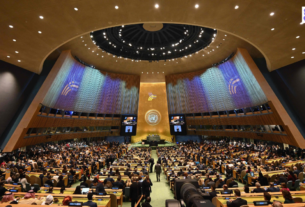A new study has revealed that extreme weather driven by climate change is beginning to take a serious toll on children’s education in England. Flooding and rising temperatures are no longer abstract environmental concerns; they are now directly impacting pupils’ ability to learn. Many schools across the country are struggling to cope with heatwaves and water damage, and its students, particularly in already disadvantaged areas, who are bearing the brunt of it.
According to the research, more than one in three secondary schools and a significant number of primary schools in England are now considered at high risk of flooding. In some cases, a single flood event has forced schools to shut down for days at a time, disrupting learning and creating logistical nightmares for both staff and families. These closures don’t just mean missed lessons; they often translate into long-term setbacks for students.
Extreme heat is another growing challenge. The study predicts that by 2050, students could lose more than eight days of school per year due to increasingly hot summers. In a worst-case scenario, that figure could rise to nearly two full weeks. These aren’t hypothetical projections; teachers are already reporting unbearable classroom conditions. In schools with outdated infrastructure, many classrooms have large windows that trap heat, pushing indoor temperatures well above 30°C during summer months. One teacher described her classroom as “a greenhouse,” and in some schools, pupils have fainted, vomited, or gone home early due to the heat.
Educators and union leaders are calling on the government to take immediate action. While the Department for Education has launched a £20 billion school rebuilding programme and is piloting climate-resilient school designs, many say that these efforts may not be enough, or fast enough. They’re pushing for solutions like better ventilation, solar shading, air cooling systems, and flood-resistant building materials.
This crisis isn’t just about physical discomfort or missed lessons. Experts warn that if left unchecked, climate-related disruptions could widen existing educational inequalities, particularly for students in underfunded schools or flood-prone communities. The classroom, once a safe and stable place for learning, is becoming increasingly vulnerable to the unpredictable forces of nature.
As climate change continues to accelerate, adapting schools to withstand it isn’t just a policy choice, it’s a moral obligation. England’s children deserve learning environments that are safe, comfortable, and future-ready. Without serious investment and planning, education itself may become another casualty of the climate crisis.




